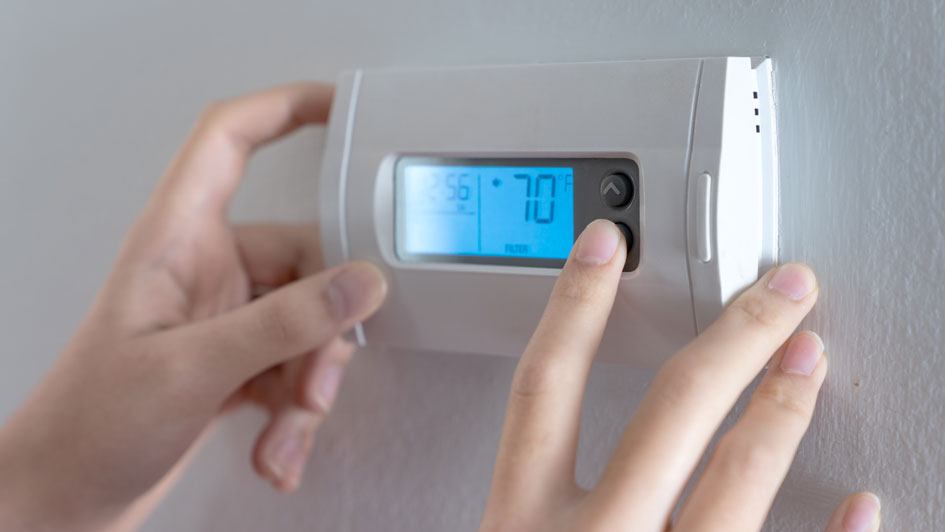
It's always nice when we manage to save money on our utility bills, but it turns out there’s a way to keep costs down, even when you're out of the house.
The secret is your thermostat. By learning more about its special features and settings, you can help the thermostat plan for your preferred temperatures. This means establishing various temperature settings for when you’re home, away or even when you’re sleeping.
If you're willing to make these adjustments, you have more time to enjoy pleasant temperatures while keeping more money in your pocket. Check out our guide on how your thermostat can save you money in the summer:
While at Home
Whenever you're at home, you want comfortable temperatures. For the most part, you probably have your thermostat lower in the summer while inside to make the most of the cool air.
But in terms of energy efficiency, the best range for the summer is actually around 78 and 80 degrees Fahrenheit. This way, you'll avoid the worst of summer while still keeping your energy bills low.
While Away
If you're setting the temperature for whenever you're gone, it’s advantageous to set the thermostat higher than normal.
Depending on the local climate or your home's location, you can set the thermostat to temperatures as high as 88 degrees while no one is home and then lower it back to the sweet spot of 78-80 degrees after you return. This way, your air conditioning won't have to work constantly to cool an empty house.
While Sleeping
When it comes to sleeping in the summer, you want a temperature that's nice and cool. A good rule of thumb is between 68-72 degrees Fahrenheit. There's less risk of getting too hot or too cold while you're trying to sleep.
Additional Ways to Reduce Energy Use:
- Put in a smart thermostat: Trying a smart thermostat in the summer is an excellent way to reduce energy costs by automatically adjusting to your lifestyle and idea of what comfortable is. A smart thermostat manages the temperature if you are home or sleeping, before allowing it to warm up when no one is around. Using reputed brands and models such as the Lennox iComfort, you can adjust the temperature remotely through your smartphone, tablet or laptop. Planning smart thermostat installation in your Lafayette home is an effortless way to set the correct temperature no matter where you are.
- Replace current equipment with a newer HVAC system: A new HVAC system can save money in the long run. With greater energy efficiency, you can also count on lower utility bills since more efficient equipment requires less energy to heat and cool your home. Air conditioning installation in Lafayette is a breeze for experienced professionals like AC Sales.
- Schedule annual AC maintenance: Whether or not you keep up with regular air conditioning maintenance in Lafayette can have a big impact on your monthly energy use. If you stay on top of cleaning key components like the coils, checking for damage and clearing ventilation of dust and debris, you may notice your HVAC system run more efficiently. Higher energy efficiency will also reduce strain on the unit and lowers operational costs, resulting in lower energy usage and subsequently, smaller bills.
- Clean or replace the air filter on a regular basis: A regular schedule for cleaning or replacing the HVAC system's air filter saves money by keeping airflow as smooth and consistent as possible. When filters are old and less effective, your air conditioner will have to work harder, and this greater strain could shorten the system’s life span and cause breakdowns.
- Verify your attic has enough insulation: Insulation is one of the key components in any energy-efficient home, keeping the hot air outside and the cool air inside through summer. The North American Insulation Manufacturers Association (NAIMA) suggests that homeowners living in southern climates should install at least 13-14 inches of insulation, while states further north need 16-18 inches.
- Inspect your ductwork: Damage to the ventilation is capable of increasing your energy bills much more than 20 percent, plus it can potentially allow harmful emissions from your water heater, clothes dryer and other appliances throughout your home. Finding any leaks fast and sealing them can fix both of those problems.
- Seal all other leaky spots in your home: Sealing leaky spots in your home with caulk, foam sealant or weather-stripping keeps temperatures a little cooler on hot summer days. Don't forget to check for any gaps around windows, doors and even outdoor fixtures. Making time to seal leaks now can help you save a lot in the long term.
 Skip to content
Skip to content
